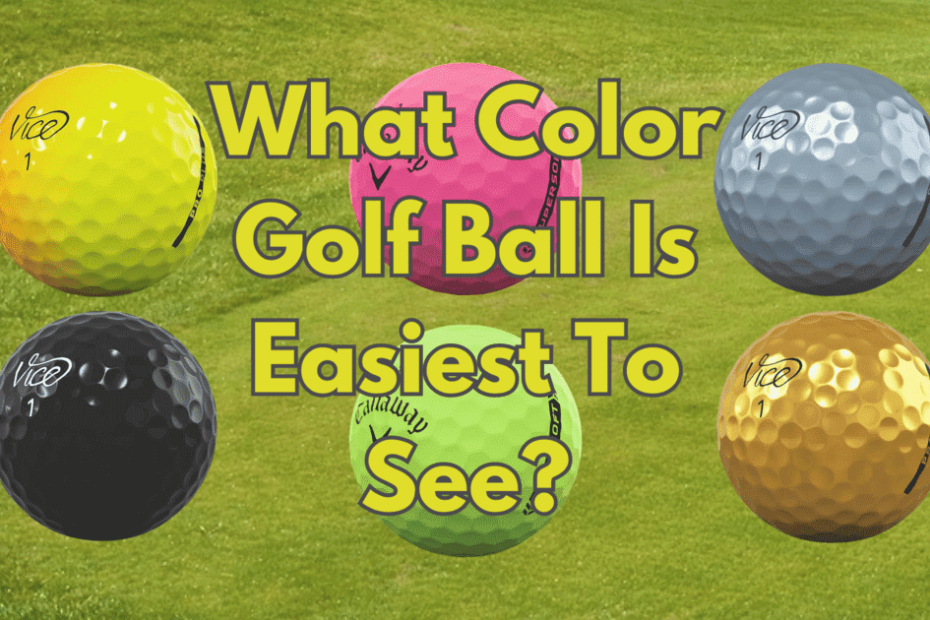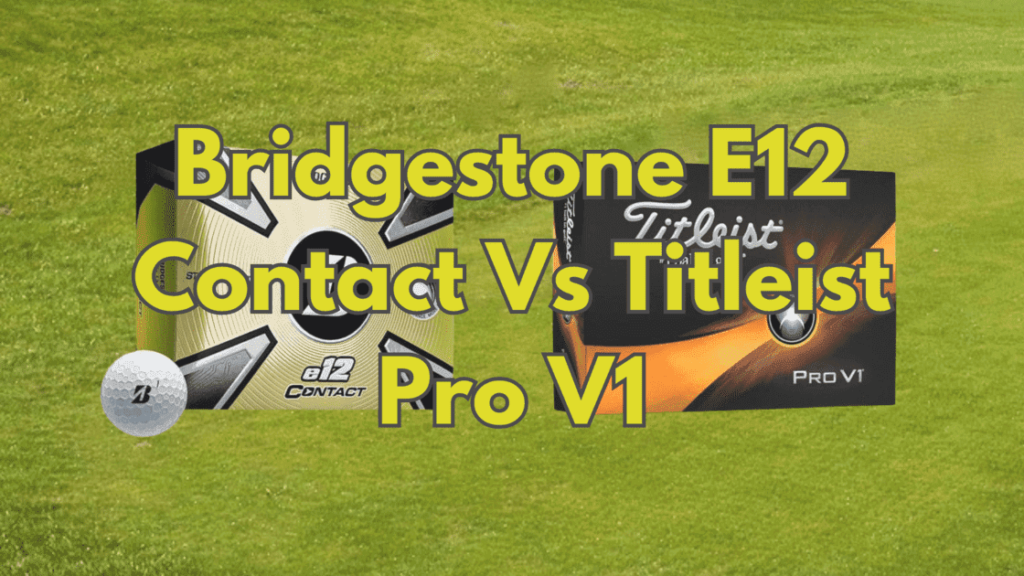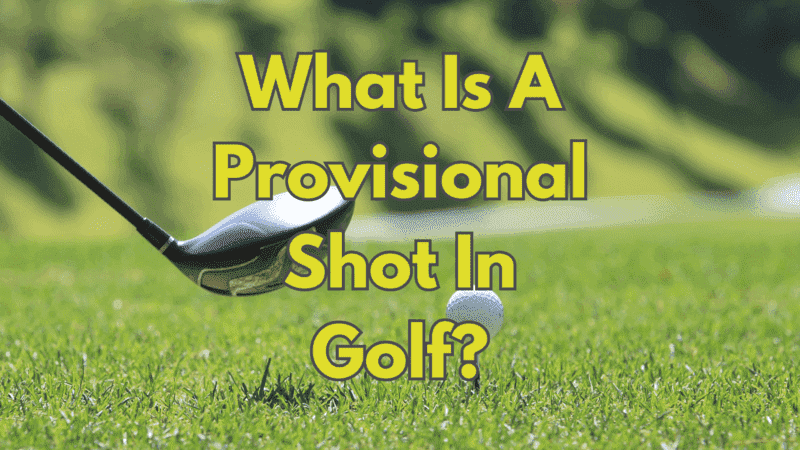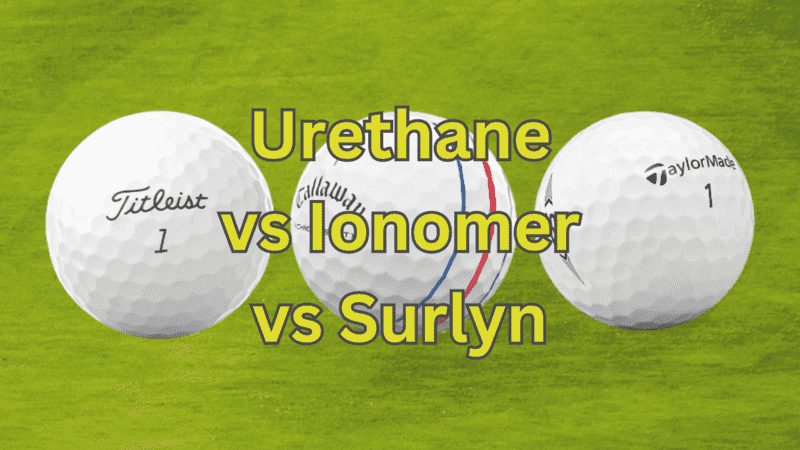Golf is a game of precision and strategy, where every small factor can make a difference in one’s performance. One crucial element that often goes unnoticed is the visibility of the golf ball. The ability to locate and track the ball in flight is essential for golfers to make accurate shots. This is where the science of visibility in golf balls comes into play. But what color golf ball is easiest to see?
Several factors affect the visibility of a golf ball, including its color, contrast, and the surrounding environment. Understanding these factors can help golfers make informed decisions when selecting their golf balls. The color of the ball, for instance, can greatly impact its visibility against different backgrounds and lighting conditions.
By analyzing the role of ball color in visibility and exploring the psychology of color perception in golf, researchers aim to enhance the overall visibility of golf balls across diverse courses and playing conditions.
Factors Affecting Golf Ball Visibility
Golf ball visibility is influenced by several key factors that can significantly impact a player’s performance on the course. One crucial factor is the color of the ball. Brightly colored golf balls, such as those in vibrant shades of yellow, orange, or green, tend to be more visible against the backdrop of grass and other natural elements.
These colors create a strong contrast that makes it easier for golfers to track the trajectory of their shots and locate their balls quickly. On the other hand, golf balls with more neutral or pastel colors may blend in with the surroundings, making them harder to spot and potentially leading to lost balls and unnecessary penalties.
In addition to color, the surrounding environment also plays a crucial role in golf ball visibility. Weather conditions, including lighting and the position of the sun, can affect how well a golfer can see their ball. For example, playing in bright sunlight with shadows cast by trees or other obstacles can create challenging visibility conditions.
Similarly, playing in foggy or misty conditions can reduce visibility, making it difficult for golfers to accurately track their shots. Understanding and adapting to these environmental factors is essential for improving visibility on the golf course and enhancing overall performance.
Understanding Color And Contrast In Golf Balls
In the world of golf, color and contrast play a crucial role in the visibility of golf balls. These factors can significantly impact a player’s ability to locate their ball on the course, allowing them to make accurate shots and improve their overall performance.
When it comes to color, it is important to consider the contrast between the ball and its surroundings. A golf ball with a light, vibrant color, such as white or yellow, tends to stand out against a green background, making it easier to spot. On the other hand, darker-colored balls, like black or navy blue, may blend in with the grass, making them more difficult to locate.
Additionally, the use of contrasting colors, such as a white ball with a red or black design, can further enhance visibility by creating a distinct visual separation between the ball and the surroundings. Overall, understanding the role of color and contrast in golf balls is vital when it comes to optimizing visibility on the course.
Analyzing The Role Of Ball Color in Visibility
The role of ball color in visibility is an essential factor to consider when choosing a golf ball. The color of the ball can significantly impact its visibility on the course, particularly in varying weather conditions and landscapes. Bright and vibrant colors, such as neon yellow, orange, or green, are popular choices as they create a high contrast against the sky and the green grass.
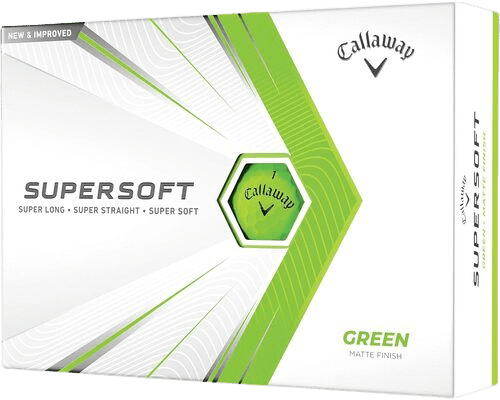
These colors are easily distinguishable and help players locate their ball quickly, even from a distance. Additionally, the use of contrasting patterns on the golf ball’s surface, such as stripes or designs, can further enhance its visibility.
While bright colors may seem like the obvious choice for increasing visibility, it is important to consider the surrounding environment. The ability to spot the ball against different backgrounds, such as trees, water hazards, or sand bunkers, should also be taken into account. In some cases, pastel colors like light blue or pink can be more effective as they blend well with the natural elements of the course.
The goal is to select a color that stands out against the backdrop but does not blend in with any specific surroundings, ensuring that the ball remains visible throughout the game.
The Impact Of Surrounding Environment On Golf Ball Visibility
Golf ball visibility is greatly influenced by the surrounding environment on the golf course. The color and contrast of the ball can either blend in or stand out against the backdrop of the course, impacting how easily it can be seen by the golfer. Different factors such as lighting conditions, weather conditions, and the types of foliage present can all play a role in the visibility of the golf ball.
Lighting conditions can significantly affect the visibility of the golf ball on the course. On a sunny day, the bright sunlight can cause shadows and glare, making it more challenging for golfers to track the trajectory of their shots. In contrast, on an overcast day or during dusk when the lighting is dim, a golf ball with high visibility color can help in distinguishing it from the surroundings.
Similarly, weather conditions such as fog or rain can also impact visibility, making it crucial for golfers to choose a ball color that stands out in such conditions. Moreover, the types of foliage and landscaping elements present on the course can affect the visibility of the ball. A ball with colors that blend in with the grass or trees can get easily lost, while a ball with high contrast color can be more easily spotted, enhancing the golfer’s ability to locate it.
Exploring The Psychology Of Color Perception In Golf
The psychology of color perception plays a significant role in how golfers perceive and track their golf balls on the course. Research has shown that certain colors can evoke different emotions and have varying levels of visibility and contrast against different backgrounds. When it comes to golf balls, choosing the right color can greatly impact a player’s ability to locate and follow their shots.
One of the key factors in color perception is contrast. The contrast between the color of the ball and the surrounding environment can affect its visibility. For instance, a golf ball with a bright color, such as yellow or orange, may stand out more against a blue sky or green grass.
On the other hand, a ball with a darker color, like black or navy blue, might blend in more with the shadows and make it harder to spot. Understanding these dynamics can help golfers make informed decisions when selecting their golf ball color and enhance their overall experience on the course.
Comparing Bright Colors Vs Pastel Colors For Golf Balls
Bright colors and pastel colors play a significant role in improving the visibility of golf balls on the course. When it comes to comparing these two color schemes, each has its own strengths and weaknesses. Bright colors, such as vibrant red, neon yellow, and electric green, are known for their high contrast and ability to stand out against various backgrounds. These bold and eye-catching hues are favored by many golfers as they offer excellent visibility, especially in low light conditions or against a backdrop of lush green fairways.
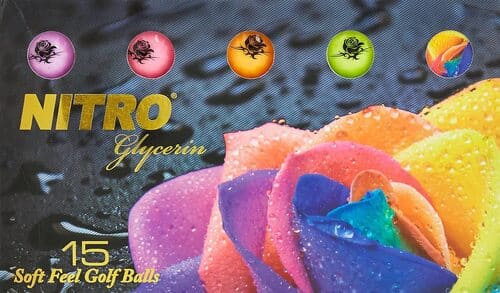
On the other hand, pastel colors like light pink, soft blue, and pale lavender provide a more subtle approach to visibility. Despite their softer tones, pastel-colored golf balls can still be easily visible, particularly on sunny days or against neutral-toned surfaces. The reduced contrast of pastel colors may suit players who prefer a more understated aesthetic without sacrificing visibility.
The choice between bright colors and pastel colors in golf balls ultimately depends on the individual golfer’s preferences and the specific conditions of the course. Golfers who prioritize maximizing visibility may opt for bright colors to ensure their ball stands out, enhancing their ability to track its trajectory and locate it after shots.
Conversely, golfers who prefer a more muted visual experience might find pastel colors to be an attractive alternative, offering sufficient visibility without the visual intensity. It is worth noting that both bright and pastel colors can have distinct advantages in different scenarios, and it is essential for golfers to experiment and find the color scheme that works best for their personal playing style and visual perception.
How Fluorescent Golf Balls Enhance Visibility on the Course
Fluorescent golf balls have gained popularity among golfers due to their ability to enhance visibility on the course. The vibrant, bold colors of these balls, such as neon green, neon orange, and bright yellow, make them stand out against the green grass and blue skies. The unique properties of fluorescent materials allow them to absorb light and emit a brighter glow, making the golf balls highly visible even from a distance.
One of the key reasons why fluorescent golf balls enhance visibility is their high contrast against the background. When the bright colors of these balls are juxtaposed against the natural greenery of the golf course, they create a stark contrast that catches the golfer’s eye.
This contrast becomes even more noticeable in low-light conditions or when the ball is partially obscured by obstacles, such as tall grass or tree branches. The human eye is naturally drawn to vibrant colors, and the use of fluorescent golf balls takes advantage of this innate visual preference, making it easier for golfers to track their shots and locate their ball with greater ease.
The increased visibility offered by fluorescent golf balls is not only beneficial for professional golfers but also for amateurs and beginners. The vibrant colors allow players to maintain focus on their shots and improve their overall accuracy.
Additionally, fluorescent golf balls can have a psychological impact on golfers, instilling a sense of confidence and reassurance. Knowing that their ball is highly visible on the course gives golfers the assurance that they will be able to easily locate and retrieve it, reducing the frustration and time spent searching for lost balls.
Consequently, the use of fluorescent golf balls has become a preferred choice among golfers who value both performance and convenience.
Evaluating The Effectiveness Of Matte Finish Golf Balls
Golfers are constantly on the lookout for ways to improve their performance on the course, and one area where advancements have been made is in the design of golf balls. One particular innovation that has gained popularity in recent years is the use of matte finish on golf balls.
Matte finish refers to a non-reflective surface that reduces glare and provides enhanced visibility. This unique characteristic has piqued the interest of golfers who struggle with tracking their ball’s flight and locating it on the course.
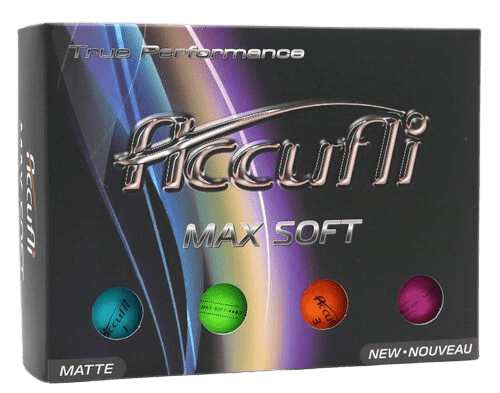
The effectiveness of matte finish golf balls lies in their ability to stand out against the background, particularly in bright sunlight or highly reflective environments. Unlike glossy or shiny golf balls, matte finish balls reduce the amount of light reflected off their surface, making them easier to see against blue skies or lush green fairways.
The impression of depth and solidity offered by the non-glossy texture also aids in tracking the ball’s movement from the moment it leaves the clubface. Additionally, the soft, muted appearance of matte finish golf balls is less likely to blend into the surrounding scenery, which can often be an issue with traditional glossy golf balls.
Tips For Choosing The Most Visible Golf Ball Color
When it comes to choosing the most visible golf ball color, there are a few key factors to consider. Firstly, it’s important to take into account the surrounding environment where you’ll be playing. If you typically play in lush, green courses, a bright color like yellow or lime green might be more visible against the grass.
On the other hand, if you often find yourself playing on sandy or desert-like terrain, a vibrant orange or even a white ball could stand out more.
Additionally, it’s crucial to pay attention to the lighting conditions during your typical playing time. If you play early in the morning or late in the afternoon when the sun is lower, opting for a high-contrast color like red or bright yellow could help you spot the ball more easily.
Similarly, if you often play in overcast or cloudy conditions, choosing a ball with a matte finish might reduce glare and enhance visibility. Considering these factors can help you select a golf ball color that maximizes visibility and ultimately improves your performance on the course.
FAQs
Why is visibility important in golf balls?
Visibility is important in golf balls because it helps golfers easily track the ball’s flight path, locate it on the course, and make accurate shots.
What factors affect golf ball visibility?
Factors such as color, contrast, surrounding environment, lighting conditions, and individual perception can affect golf ball visibility.
Does the color of a golf ball affect its visibility?
Yes, the color of a golf ball can significantly impact its visibility. Some colors are easier to spot against different backgrounds and lighting conditions.
How does understanding color and contrast help in choosing a golf ball?
Understanding color and contrast can help golfers select a ball color that stands out against the golf course’s environment, making it easier to see and track during play.
How does the surrounding environment affect golf ball visibility?
The surrounding environment, including factors like grass color, weather conditions, and lighting, can influence how easily a golf ball can be seen against its background.
Does psychology play a role in color perception in golf?
Yes, psychology plays a role in color perception in golf. Certain colors can evoke different emotional responses, which may impact a golfer’s focus and performance.
Are bright colors or pastel colors better for golf balls?
The choice between bright colors and pastel colors depends on personal preference and the golfer’s ability to see and track the ball against the course’s surroundings.
How do fluorescent golf balls enhance visibility on the course?
Fluorescent golf balls contain pigments that react to ultraviolet light, making them appear brighter and more noticeable, especially in low-light conditions.
Do matte finish golf balls improve visibility?
Matte finish golf balls can reduce glare and reflections, enhancing visibility by reducing the amount of light bouncing off the ball’s surface.
What are some tips for choosing the most visible golf ball color?
Some tips for choosing the most visible golf ball color include considering the course’s surroundings, lighting conditions, personal preference, and experimenting with different colors during practice sessions.
